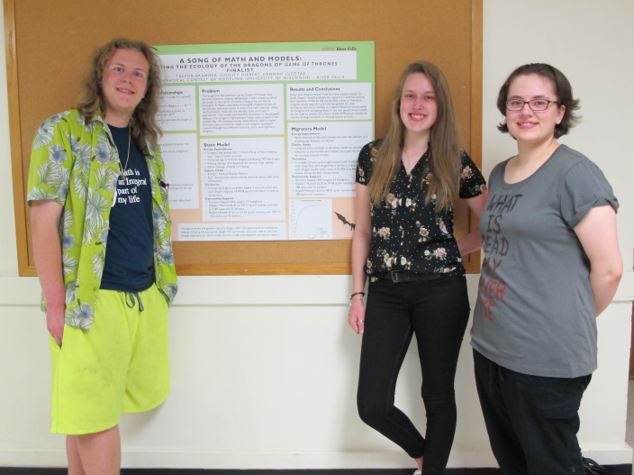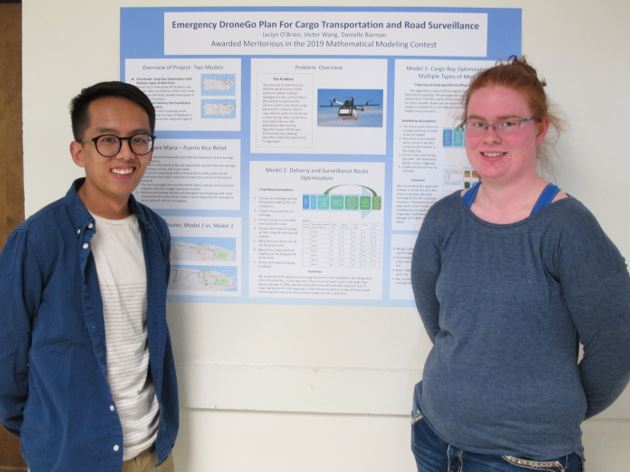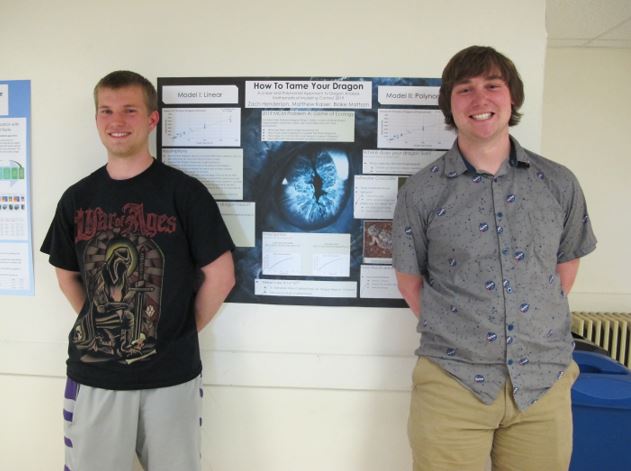UNIVERSITY OF WISCONSIN River Falls
Mathematics
Undergraduate Research
UWRF Math Modeling Team Finalist Winners of COMAP 2019 Contest
Team members Trevor Brammer, Lindsey Hiebert and Hannah Luedtke, pictured above share their research results as part of the events at the Third Annual Integration Bee. They wrote a paper addressing problem A, Game of Ecology. They wrote code in MatLab and R to implement several allometric equations that enabled them to determine food requirements for fictional dragons, with either migratory or non-migratory patterns, and thus recommend appropriate dragon ecology. They included a discussion of how their fictional dragon models could be applied to analyze dinosaur habitats and to inform scientists working to protect endangered species. Of the 14,108 international competitors, 25 teams were designated Finalists and 17 were Outstanding winners, placing Trevor, Lindsey and Hannah in the top 0.3% of all competitors.
UWRF Math Modeling Team Meritorious Winners of COMAP 2019 Contest
Team members Victor Wang and Danielle Barman, pictured above share their research results as part of the events at the Third Annual Integration Bee. Along with team member, Jaclyn O'Brien (not pictured) they wrote a paper to address problem B, Send in the Drones: Developing an Aerial Disaster Relief Response System. They used ideas from matrix theory, packing algorithms and Hamiltonian cycles to model storage and transportation of medical packages by drones throughout the island of Puerto Rico after a devastating hurricane. The Meritorious designation places them in the top 6.8% of the 14,108 teams that competed this year.
UWRF Math Modeling Team Successful Participants in COMAP 2019 Contest
Team members Zachary Henderson and Blake Mattson, pictured above share their research results as part of the events at the Third Annual Integration Bee. Along with team member, Matthew Kaiser (not pictured) they wrote a paper to address problem A, Game of Ecology. They modeled dragon weight as a function of age and then applied Kleiber’s Law, by comparing fictional dragons to real crocodilians, to determine dragon food requirements, which in turn enabled them to recommend an appropriate dragon habitat.













